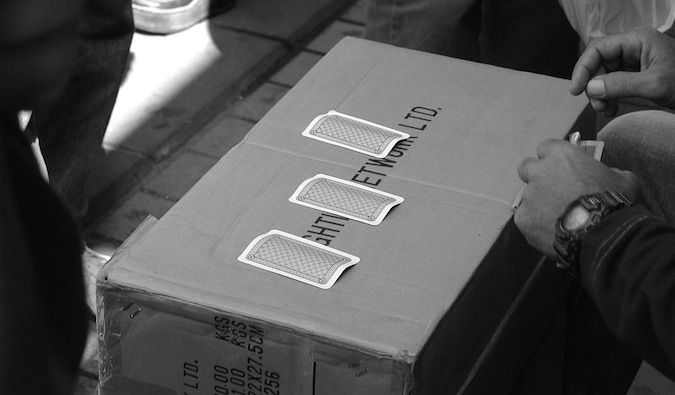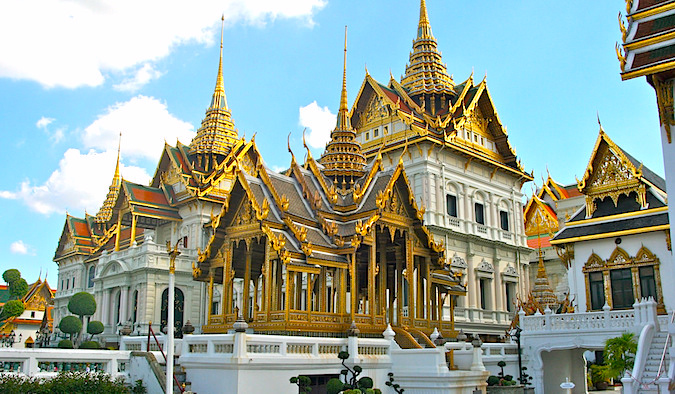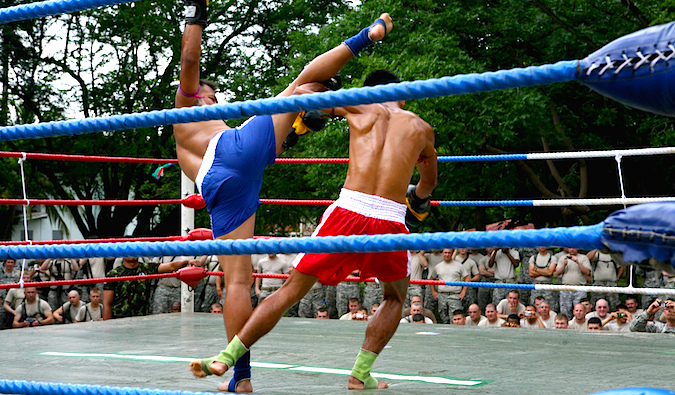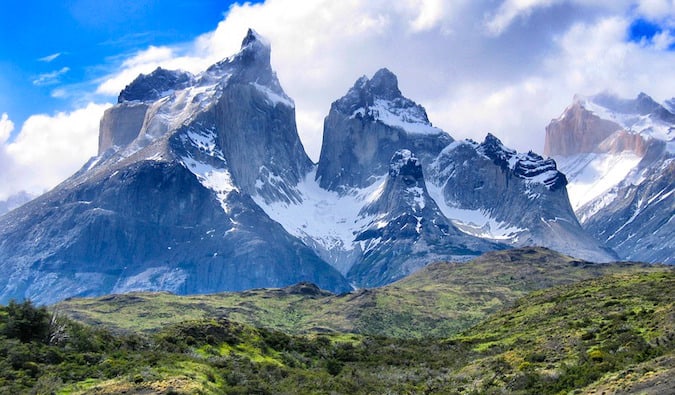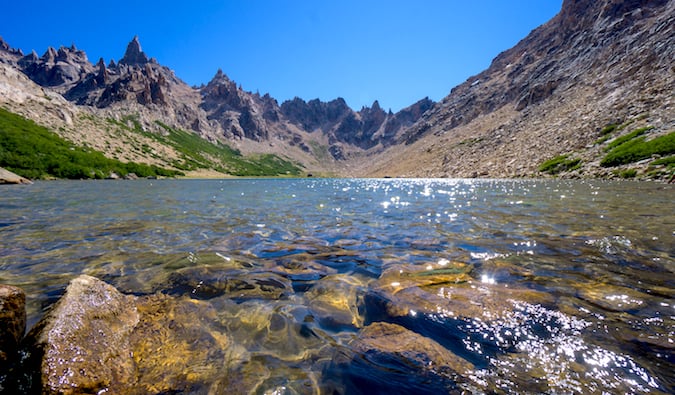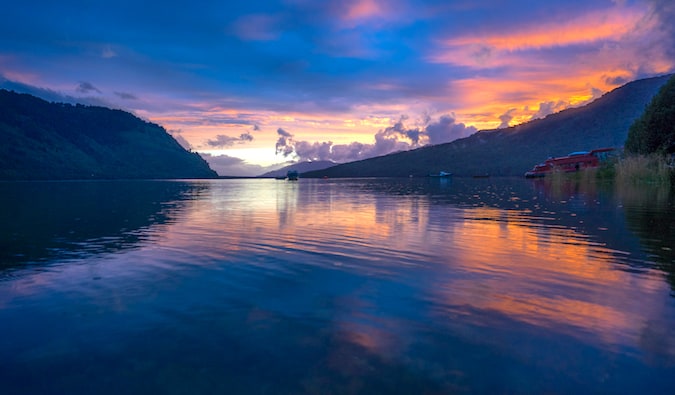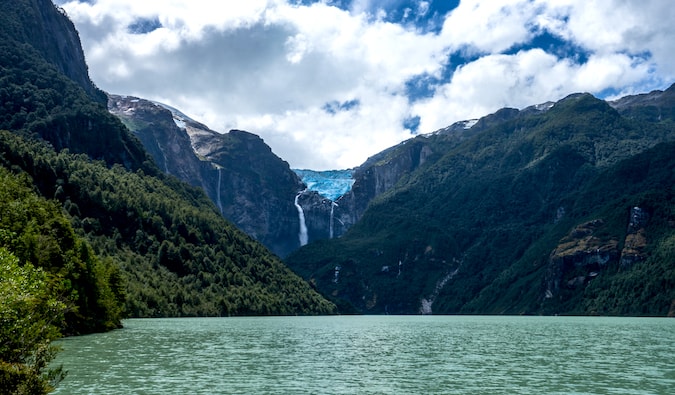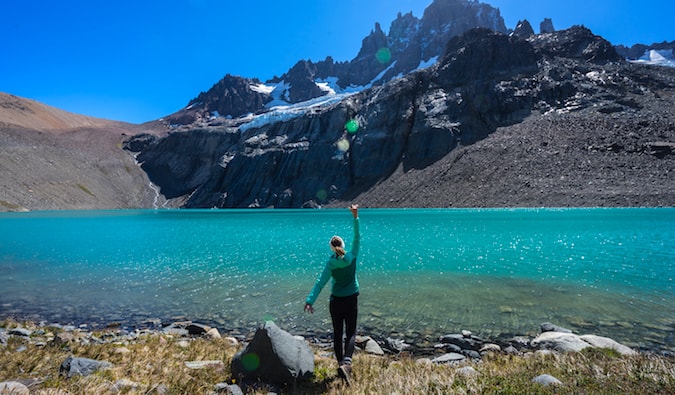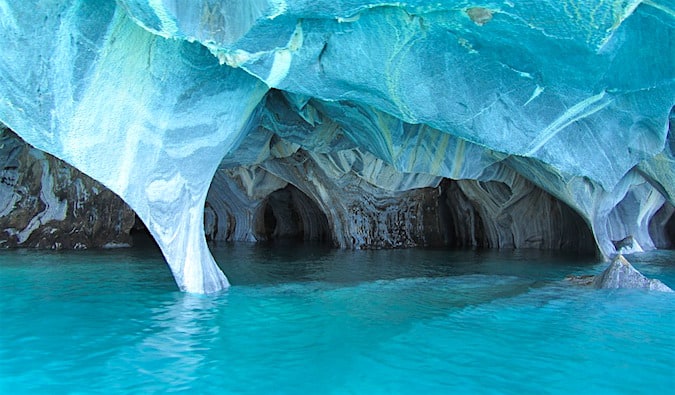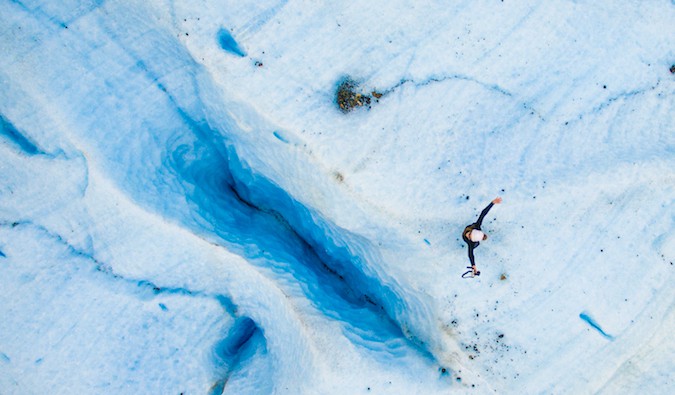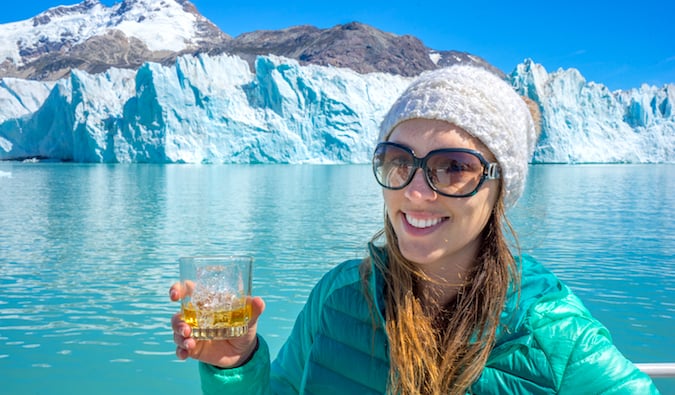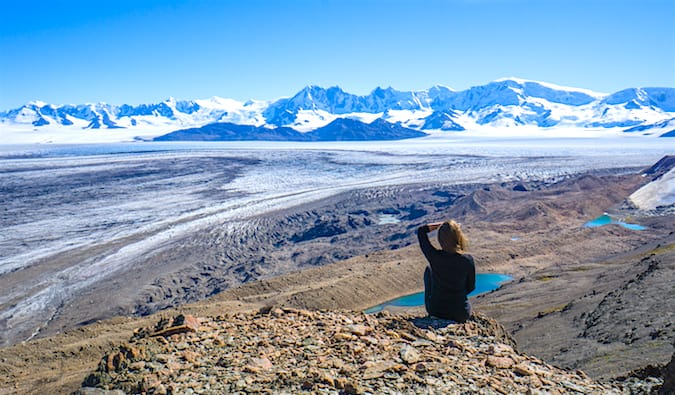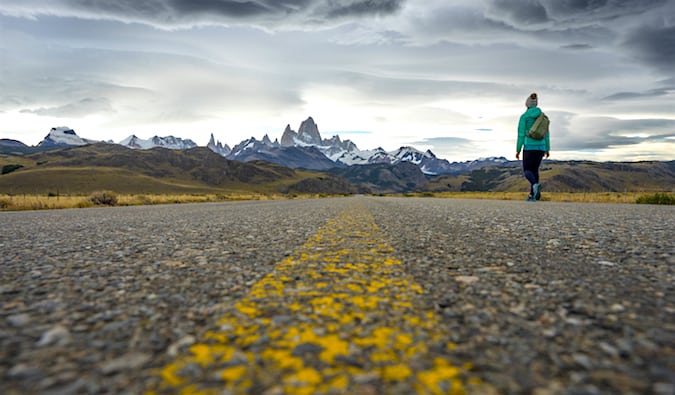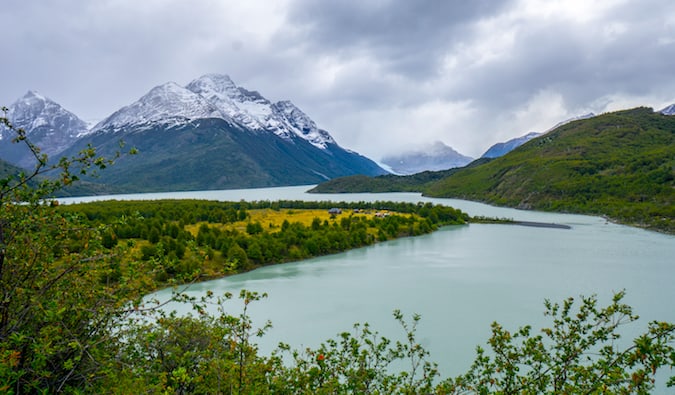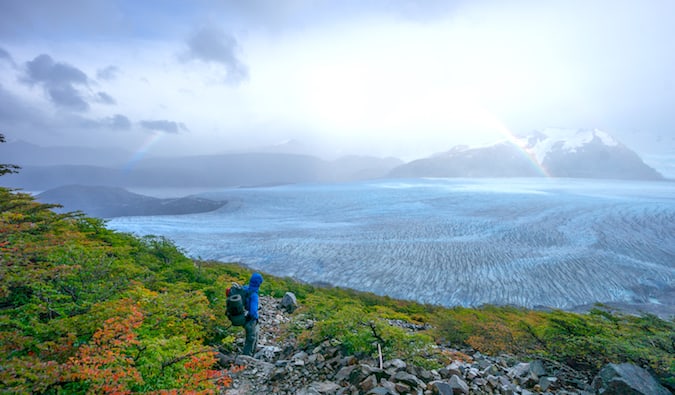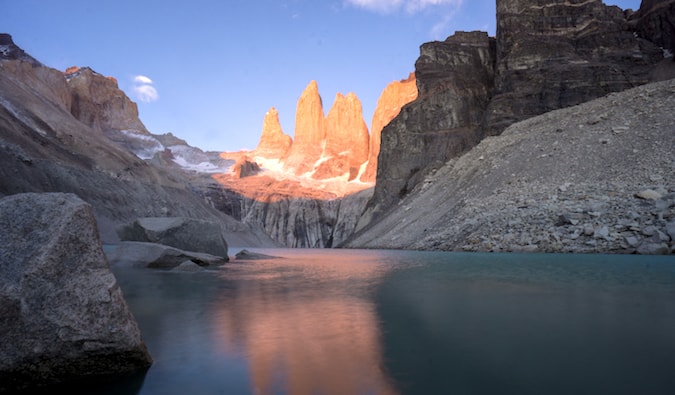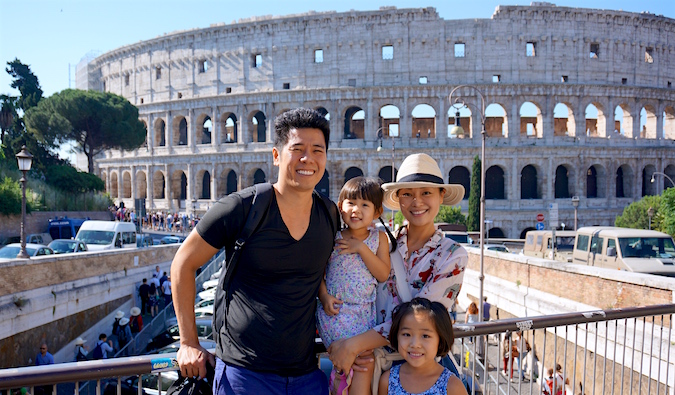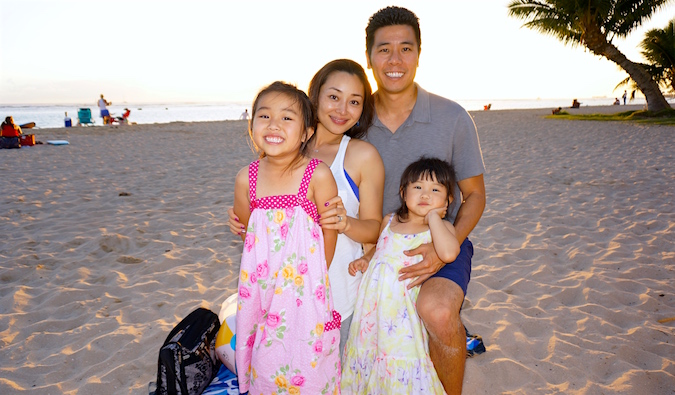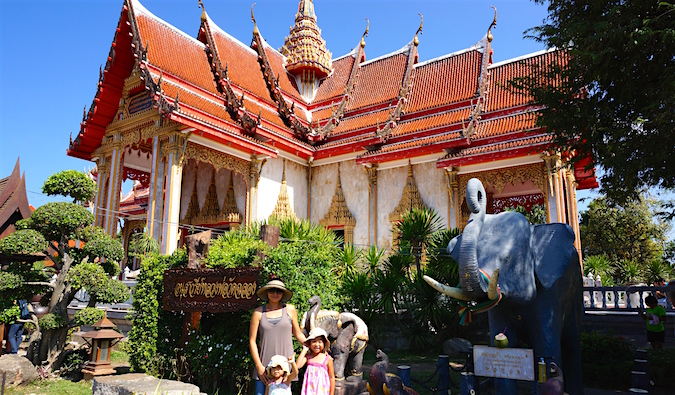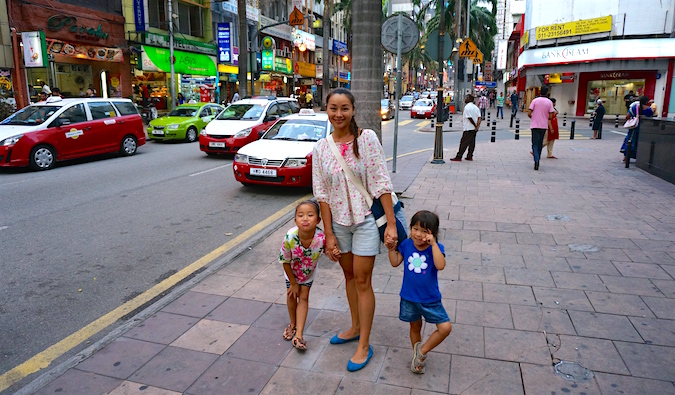get a lot of questions about health care on the road – “How can I avoid getting sick? What need vaccines? What happens when I do get sick?” Since I’m not a doctor, I don’t like giving medical advice so I’ve asked Mike Huxley, a registered nurse and author of the blog Bemused Backpacker to write a few articles on health and safety when you travel. His first article focused on creating the perfect first aid kit. This article features easy ways to stay healthy on the road.
Getting sick is a part of everyday life, and being on the road doesn’t exempt you from that fact, especially when travel itself it exposes you to a whole new range of bugs, parasites, and environments. The fact of the matter is the longer you are traveling, the more likely you are to pick up a bug or two.
The key to minimizing the chances of this, however, is to actively combat the risk factors of becoming sick in the first place. The last thing you want to do is to expose yourself to any more risk than you have to. Prevention is far better than any cure.
Wash your hands

I know this sounds basic, but it is surprising how many people forget it, and as a nurse, the simple act of washing your hands has been drilled into me since day one of basic training as a key component in infection control. The National Health Service (NHS) in the UK has had a huge impact on controlling infection in a clinical setting simply by reinforcing the importance of washing your hands, but the same is true for every aspect of day-to-day life, and traveling the world is no exception.
Hand hygiene is essential to stop the spread of infection and can dramatically reduce your chances of diarrhea, vomiting, food poisoning, gastroenteritis, flu, norovirus, MRSA, or even hepatitis A.
Many travelers carry small bottles of hand gel, and these are great as a backup, but they aren’t a replacement for good old soap and water. Wherever possible, wash your hands under hot water for at least thirty seconds before and after eating and always after going to the toilet.
Drink bottled water

When you can’t be sure of the purity of the local water or you are traveling in areas where sanitation is not that great, then it should go without saying that you should avoid the local tap water. Even if locals drink it without any problems, your stomach may not have the right bacteria to protect you from becoming ill, avoid local water — even ice in your drinks — in countries that don’t purify their tap water.
I recommend that at the very least you should always drink bottled water and double-check that the seal is intact on the bottle top too (a common scam is to sell bottles refilled with tap water). It is also a good idea to use bottled water to brush your teeth. But personally I prefer to use a water bottle with a built-in filter as this reduces the need to buy bottles of water constantly, saving both money and the environment.
Be careful of food contamination

Food contamination is one of the biggest causes of traveler’s diarrhea and gastrointestinal problems on any travel adventure. If you are not careful with your food on your travels, you could potentially be exposing yourself to diarrhea, E. coli, Shigella, Salmonella, Giardia, Entamoeba hystolytica, Campylobacter, Cryptosporidia, Cyclospora, cholera, and much more nastiness.
You should always ensure — as much as is practicably possible — that any food you eat is fresh, cooked thoroughly, and served piping hot.
I love street food for this very reason, as you can see how clean the cooking environment is, and the food is often prepared right in front of you. But look out for signs of good hygiene practice at any street food stall or food court you eat at. Does the person handling the food wear disposable gloves and change them frequently? Is there a separate person handling the money or, at the very least, does the person cooking the food remove and replace gloves every time they handle cash? Is hand washing a regular occurrence? Is raw food left out in the open or is it stored correctly? These things may seem inconsequential but they are important.
You may want to avoid — or be very careful of — the following:
- Salads that may have been prepared in local untreated water
- Raw fruit and vegetables that you haven’t peeled or skinned yourself (if you have, they are generally fine)
- Food that has been left out and exposed for a period of time
- Food that is shared, such as in buffets undercooked, raw, or reheated food, especially meat, fish, or rice.
You probably aren’t going to avoid a bit of stomach upset completely on your travels — especially if you are traveling long term — but if you are aware of good food hygiene practices and follow them as much as possible, then you can at the very least minimize the risk of becoming ill.
Don’t be afraid of having familiar food

Eating local food and delving into the local cuisine is one of the absolute true pleasures of traveling and one you should never miss out on, but that said, a degree of common sense is needed too. Jumping straight into a diet of spicy curries or predominantly red meat is a good way to ensure some form of gastrointestinal upset if your stomach isn’t used to it.
Food intolerances happen when your gut can’t properly digest the food you’ve eaten, or you’ve introduced something completely new and different to it, which can irritate the digestive tract and lead to stomach pain, cramps, gas, diarrhea, vomiting, and heartburn. Don’t worry — this generally isn’t serious and will pass relatively quickly. The trick to trying new foods and new cuisine is to mix it up a little bit.
If you have a sensitive stomach, take it easy at first and don’t be afraid of eating familiar food from time to time.
Try and stay active

One of the best ways to stay fit and healthy and fight off unwanted infections is exercise. The benefits of exercise are well known and well documented: it improves your overall health and well-being and strengthens your immune system, which makes you less susceptible to illness. And if you do get sick, your body is better able to fight off the infection and more quickly get you back on your feet. It isn’t foolproof, of course, because fit people still get sick, but in general the fitter you are, the better your body will be at shrugging off that annoying bug or illness. I always try and maintain a healthy lifestyle, and that doesn’t change because I am traveling.
If you aren’t active or fit before you start traveling, use it as an excuse to start! Go on a jungle trek, go hiking into the countryside or up a mountain, swim in the sea, go for a jog — whatever tickles your fancy as long as it gets you a little out of breath.
Protect yourself against the sun

Sunburn can seriously ruin a good travel experience! I got very badly sunburned years ago in Thailand after snorkeling for too long and forgetting to reapply sun cream. It is not an experience I want to repeat!
Current recommendations on sun protection say you should use a minimum of factor 15, though I recommend at least SPF 30.
Protecting yourself from the sun goes beyond getting bad sunburn though. You should also stay well hydrated if you are traveling in a country or region with a hot or tropical climate, as well as cover up with loose clothing and even a hat or scarf. If you don’t, then dehydration can set in very quickly, and that can lead to more serious conditions such as exposure, heat exhaustion, and heatstroke, which if left unattended can become a medical emergency.
I once cut a day’s sightseeing short in Egypt when I spotted the signs and symptoms of heat exhaustion developing in another traveler and had to help her to get rehydrated and cooled down. It happens a lot more easily than many people think so be sensible, use sunscreen, cover up, and stay hydrated.
Get vaccinated

Vaccinations are probably one of the most common travel health concerns that people ask my advice on in my capacity as a qualified nurse. There is no one-size-fits-all answer to those questions, however, due to the unique nature of individual circumstances, but there is one universal constant: If you can protect yourself, it is a good idea to do so.
Prevention is always better than the cure, and nothing is better at protecting you from the risk of getting a disease than being vaccinated against it.
Not all vaccinations are required for every individual for every trip, and a lot depends on what vaccinations you have already, what country or region you are visiting, and individual factors, such as your personal medical history, how long you will be traveling, and what you will be doing. This is why it is essential that you get one-on-one personal advice from your local travel clinic, nurse specialist, or physician before you travel.
To give you a basic understanding of the types of vaccinations you will need, however, they are often broken up into three distinct categories:
- Routine vaccinations are the ones that everyone gets throughout their childhood and early adult life; specific schedules (and sometimes the vaccine administration itself) do differ from country to country, but these generally include the BCG vaccine, the pneumococcal conjugate vaccine, and vaccinations for diphtheria, tetanus, and pertussis (DTP); hepatitis B; hepatitis A (for at-risk groups); Haemophilus influenzae type b; rotavirus; measles, mumps, and rubella (MMR); and HPV (for young girls only, to prevent cervical precancers and cancers). It is important that you are fully up to date with all of your routine vaccinations, including boosters, if you plan to travel. If you aren’t, then a health professional’s office should be your first port of call, before even departing.
- Recommended vaccinations include all the vaccines that aren’t included in the routine schedule of your own country and are specific to travel to any given destination. These can include vaccinations for hepatitis A (if you don’t have it already), rabies, Japanese encephalitis, cholera, and typhus, among others.
- Required vaccinations refer to vaccinations for yellow fever, meningococcal disease, and polio. Many countries where yellow fever is present will require you to have proof of vaccination before you are allowed in, and if you are heading anywhere else after traveling to a country where these diseases are present, you will need to show proof of vaccination — known as an international certificate of vaccination or prophylaxis (ICVP) — before entry.
Protect yourself from mosquito bites

Mosquito bites are an absolute nightmare for any traveler. At best they will simply annoy you with painful and itchy welts, but at worst they can transmit a whole variety of diseases, such as yellow fever, dengue, Japanese encephalitis, and chikungunya, not to mention malaria.
Mosquitoes can be a problem in many parts of the world, but the Centers for Disease Control and Prevention (CDC), the World Health Organization, and the NHS’s Fit For Travel site are excellent places to find out where there are outbreaks of diseases such as dengue or malaria.
Even if you are in a low- to no-risk area, it is still a good idea to prevent mosquitoes from biting you in the first place, even if it is only to avoid the annoyance of painful bites. It should go without saying that the best thing you can do to protect yourself from being bitten is to use preventive measures:
- Air-conditioned rooms are great for minimizing mosquito bites, as they are often better sealed and less likely to let them in.
- Cover up. Wearing the right clothing is essential. Wear light, loose cotton clothing that covers most of your skin, especially around peak exposure times and places, for example, near bodies of water or at twilight or after dark, the peak time for malaria-carrying mosquitoes to feed.
- Sleep under permethrin-coated nets where necessary.
- Use anti-mosquito coils and plug-in devices where appropriate.
- Always apply a good dose of 30–50% DEET spray, and reapply it regularly. Some people prefer more natural alternatives, but these are often not as effective or are often not clinically proven to be effective at all.
It is important to remember that none of these methods is completely foolproof. You can do everything right and still get bitten. I once caught dengue fever in India despite taking all the usual preventive measures, and it was one of the most unpleasant travel experiences of my life. It isn’t nicknamed “breakbone fever” for nothing! However, you can always minimize your risks with the tips above.
Take antimalarials when necessary

As a nurse I advise people on taking antimalarials all the time, and one of the biggest problems is the huge amount of misinformation and fear there is surrounding this issue.
Basically speaking, if the area you are heading to is considered a high risk for malaria then yes, antimalarials are usually strongly advised. If you are visiting an area that is a low to no risk, then antimalarials aren’t usually advised.
Antimalarials are medications, and like all medications they have side effects. There isn’t one type of antimalarial; there are a variety of prophylaxes available, each of which has a range of common and rare side effects.
The most important thing to remember, however, is that each antimalarial affects different people differently. Just because one person develops side effects, that doesn’t mean the next person will. In fact, the people who suffer from severe side effects are in the absolute minority. A lot of people will only suffer mild side effects, and most will have none at all.
Now, knowing when they are necessary and when they are not is a different matter, and a lot of different factors have to be taken into consideration. These factors include the following:
- The level of risk in your destination
- The time of year you are traveling
- Whether there are any current outbreaks
- How long you are staying in any high-risk areas
- What you will be doing (spending extended time in rural areas or cities, spending time near bodies of water; other high-risk factors, etc.)
- Your personal medical history
- Past experience with antimalarials
Make an appointment with a travel health professional

It is important that you discuss your plans with a health professional well before you head off on your ‘round-the-world adventure. Many travelers instead leave it until the last minute. Too many people contact me for an appointment at my travel clinic a week before they leave not realizing that vaccinations may need to be timed weeks apart!
The average recommended time to see a health professional is 6–8 weeks before you leave, but personally I would aim for a little earlier than that, especially if you will think you will need more than one vaccination or if you have specific health concerns. The worst that will happen is that you will get an appointment closer to your time of departure if it is determined that you don’t need that amount of time to get things sorted.
These very simple steps will dramatically reduce your risk of getting ill abroad, but they are often so simple that many people overlook them. Before you set off on your trip of a lifetime, take a moment to think about your health and prepare properly. That way you will be able to enjoy your trip with peace of mind.
Remember that these are general health tips only, and while they are written by a qualified nurse, they are no replacement for a consultation with your travel health nurse or physician, where individual health concerns can be discussed based on your personal history.



